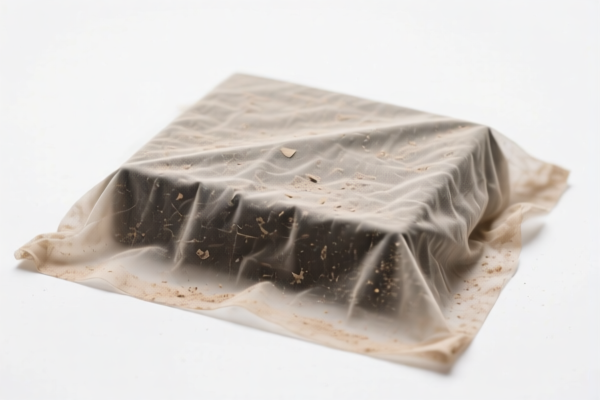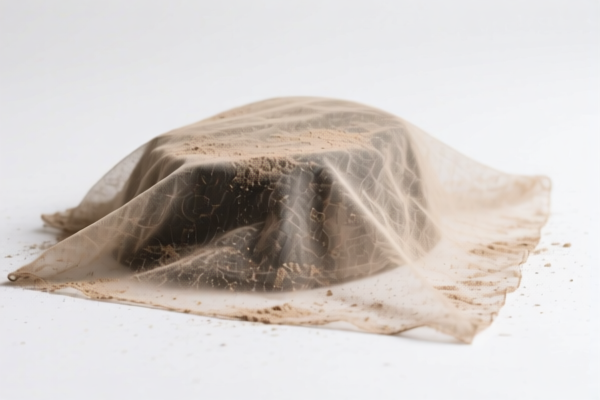| HS Code | Official Doc | Tariff Rate | Origin | Destination | Effective Date |
|---|---|---|---|---|---|
| 3926904800 | Doc | 33.4% | CN | US | 2025-05-12 |
| 3926909989 | Doc | 42.8% | CN | US | 2025-05-12 |
| 3923900080 | Doc | 58.0% | CN | US | 2025-05-12 |
| 6114909070 | Doc | 35.6% | CN | US | 2025-05-12 |
| 8487900080 | Doc | 83.9% | CN | US | 2025-05-12 |




Dust Cover
A dust cover is a protective cover used to shield objects from dust, dirt, and other environmental contaminants. These covers are employed across a wide range of applications, from household items to industrial machinery.
Material
Dust covers are fabricated from diverse materials, selected based on the level of protection required, the object being covered, and cost considerations:
- Polyethylene (PE): A common, low-cost option, suitable for general dust protection. Often used as disposable covers.
- Polypropylene (PP): More durable and tear-resistant than polyethylene, offering better protection.
- Polyester: Provides good resistance to stretching and abrasion, commonly used for furniture and equipment covers.
- Nylon: Offers high strength and durability, often used for heavier-duty applications.
- Vinyl: Waterproof and easy to clean, suitable for protecting items from moisture as well as dust.
- Canvas: A heavier, more robust material, often treated for water resistance, commonly used for outdoor equipment.
- Custom Fabrics: Specialized fabrics with properties like UV resistance, flame retardancy, or anti-static capabilities are used for specific applications.
Purpose
The primary purpose of a dust cover is to maintain the cleanliness and functionality of the covered object. This is important for:
- Preventing Damage: Dust and debris can cause scratches, abrasions, and other physical damage.
- Maintaining Functionality: Dust can interfere with the operation of mechanical and electronic components.
- Extending Lifespan: By protecting against environmental factors, dust covers can prolong the life of the object.
- Aesthetic Preservation: Dust accumulation can detract from the appearance of items.
Function
Dust covers function by creating a physical barrier between the object and its surroundings. They typically feature:
- Enclosed Design: Covers completely encapsulate the object to prevent dust ingress.
- Elastic or Drawstring: Secure the cover tightly around the object.
- Ventilation (Optional): Some covers include vents to prevent condensation buildup.
- Clear Panels (Optional): Allow for visibility of the object without removing the cover.
Usage Scenarios
Dust covers are used in a broad spectrum of applications:
- Household: Covering furniture, appliances, electronics, and stored items.
- Automotive: Protecting vehicles during storage or periods of inactivity.
- Industrial: Shielding machinery, equipment, and tools from dust and debris in manufacturing and maintenance environments.
- Construction: Protecting building materials and equipment.
- Laboratories: Covering sensitive equipment and samples.
- Electronics Manufacturing: Protecting components during storage and transportation.
Common Types
- Fitted Dust Covers: Custom-shaped covers designed to precisely fit a specific object.
- Universal Dust Covers: Available in standard sizes to fit a range of objects.
- Equipment Covers: Large covers designed to protect entire pieces of machinery.
- Furniture Covers: Specifically tailored for sofas, chairs, tables, and other furniture items.
- Appliance Covers: Designed to protect refrigerators, washing machines, dryers, and other appliances.
- Stretch Covers: Elasticized covers that conform to the shape of the object.
- Zippered Dust Covers: Feature a zipper for easy access to the covered object.
Based on the provided information, classifying “a dust cover” requires careful consideration of its material and intended use. Here's a breakdown of potentially relevant HS codes:
- 3926904800: This code covers “Other articles of plastics and articles of other materials of headings 3901 to 3914: Other: Photo albums”. While seemingly specific, the broader category of “Other” within plastics articles could encompass a dust cover if it’s made of plastic and doesn’t fall into more defined categories. The total tax rate is 33.4% (Base tariff: 3.4%, Additional tariff: 0.0%, Post-April 2, 2025, Additional tariff: 30.0%).
- 3926909989: This code is for “Other articles of plastics and articles of other materials of headings 3901 to 3914: Other: Other”. This is a very broad “catch-all” category for plastic articles not specifically listed elsewhere. If the dust cover is plastic and doesn’t fit into a more precise classification, this code is applicable. The total tax rate is 42.8% (Base tariff: 5.3%, Additional tariff: 7.5%, Post-April 2, 2025, Additional tariff: 30.0%).
- 3923900080: This code covers “Articles for the conveyance or packing of goods, of plastics; stoppers, lids, caps and other closures, of plastics: Other Other”. If the dust cover is used for protecting goods during conveyance or packing, and is made of plastic, this code may be relevant. The total tax rate is 58.0% (Base tariff: 3.0%, Additional tariff: 25.0%, Post-April 2, 2025, Additional tariff: 30.0%).
According to the provided reference material, the HS code options related to 'a dust cover' are limited, with only the following 3 found.
It is important to determine the precise material composition of the dust cover. If it is made of plastic, either 3926904800 or 3926909989 would be applicable, depending on whether it can be further classified. If it is used for packing or conveyance, 3923900080 may be appropriate.
Customer Reviews
No reviews yet.